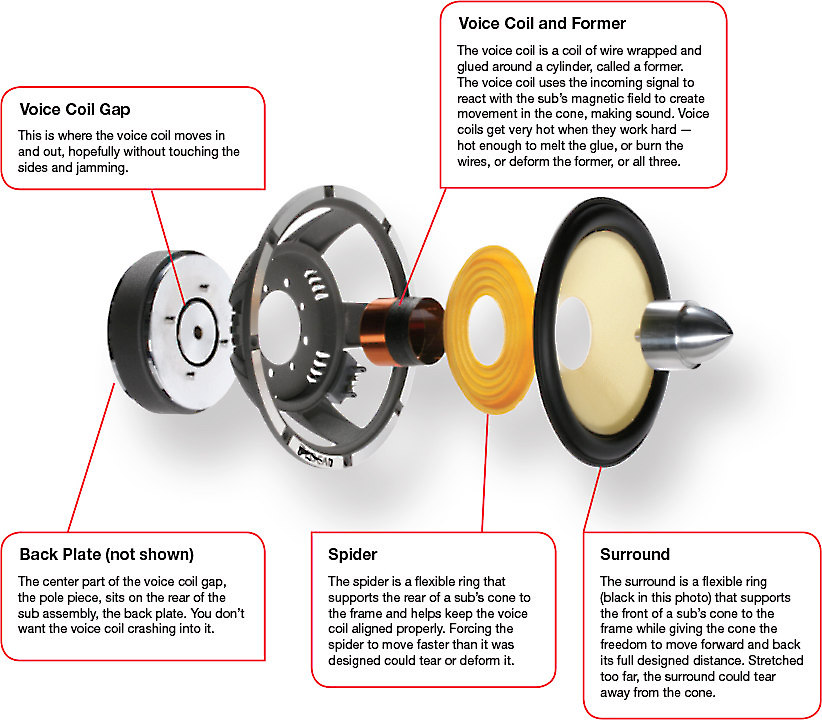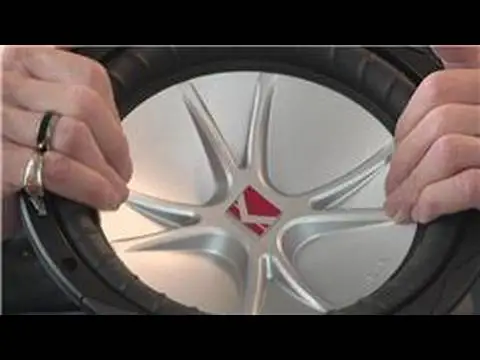To know if a sub is blown, listen for distortion or lack of sound. Look for physical damage like tears or punctures in the cone or surround.
Subwoofers are an essential component of any audio system, responsible for reproducing low-frequency sounds. However, over time, they may experience wear and tear, which can impact their performance. One common issue is a blown sub, where the speaker can no longer produce sound as intended.
Identifying if a sub is blown is crucial to ensure optimal audio quality, as the damaged speaker can affect the entire system’s sound. Listening for distortion or a lack of sound, along with inspecting the cone and surround for visible damage, are the primary ways to tell if a sub is blown. Read on for more detailed information on identifying blown subs.

Credit: www.reddit.com
Symptoms Of Blown Subwoofer
Blown subwoofers can be hazardous to your audio system, as they can not only affect the quality of the sound produced but also damage other components of your speaker. The following symptoms are indicative of a blown subwoofer:
- Distorted Sound: A blown subwoofer produces a distorted, crackling sound that is unpleasant to the ears.
- No Sound: Another obvious symptom of a blown subwoofer is no sound at all. If there is no response from your speaker, it could be a sign of a blown subwoofer.
- Crackling Noise: Any crackling or popping noise coming from your subwoofer is not normal. It is a sign that the voice coil in your speaker is damaged, and you need to replace it as soon as possible.
- Unusual Vibration: A blown subwoofer can also produce unusual vibrations. If the vibrations from your speaker have a rattle-like feel, it could be due to a blown subwoofer.
- Reduced Sound Quality: Lastly, a blown subwoofer can drastically reduce the sound quality of your speaker. If your speaker’s sound quality has diminished, it’s time to check for a blown subwoofer.

Credit: m.youtube.com
Identifying A Blown Subwoofer
To determine if a subwoofer is blown, there are a few visual and auditory clues to look for. Start with a visual inspection, checking for obvious signs of damage such as cracks or tears in the cone or surround, and any other physical irregularities. Next, use a multimeter to test the impedance of the subwoofer. A blown subwoofer will typically have higher than normal impedance levels. Finally, listen for any unusual sounds coming from the subwoofer when it’s in use. If it’s making a buzzing or rattling noise, or if it doesn’t produce any sound at all, then it’s likely that the subwoofer is blown. By following these simple steps, you can easily identify a blown subwoofer and take the necessary steps to repair or replace it as needed.
| Visual Inspection | Using a Multimeter | Observing Movement |
|---|---|---|
| Look for physical damage to the cone or surround | Test the impedance levels with a multimeter | Observe any unusual movements or vibrations of the subwoofer |
| Check for any other physical irregularities | Compare the impedance reading to the subwoofer’s specifications | Listen for any buzzing or rattling noises |
Fixing A Blown Subwoofer
Subwoofers can be a critical component in your car’s audio system, but like any speaker, they can be blown. The tell-tale signs of a blown subwoofer include distorted or no sound, crackling or popping sounds, or a lack of bass. When this happens, you have two options: repairing the subwoofer or replacing it.
If you choose to repair the subwoofer, it’s important to locate the blown component, such as a torn cone or damage to the voice coil. You can replace these parts or repair them with a special adhesive. However, this can be a time-consuming process and may require experience with electronics.
On the other hand, replacing a blown subwoofer can be a simpler and more cost-effective solution. When selecting a replacement subwoofer, make sure it matches the size and wattage of your old subwoofer. Consider investing in a high-quality subwoofer to prevent issues down the road.
| Pros | Cons |
|---|---|
| Repairing a blown subwoofer can be a cost-effective solution, especially if you have experience with electronics. | Repairing a blown subwoofer can be a time-consuming process, and it may be difficult to locate the blown component. |
| Replacing a blown subwoofer can be a simpler solution | Replacing a blown subwoofer can be more expensive than repairing it. |
| You can invest in a high-quality subwoofer to prevent future issues. | Replacing a subwoofer may require additional configuration or installation. |

Credit: www.crutchfield.com
Preventive Measures
Preventing your subwoofer from blowing out should be a top priority for any audio system owner. One key element in preventing this is ensuring that your subwoofer is paired with the right amplifier. Overloading the subwoofer with too much power can also cause damage, so it’s important to be mindful of the limits of the subwoofer. Proper installation is also crucial in preventing damage to the sub. This includes positioning the subwoofer in a secure location so that it doesn’t move around while in use and avoiding placing it in a location where it may be exposed to extreme temperatures. Regularly checking the connections and wires can also help prevent damage from occurring.
Conclusion
Identifying a blown sub is crucial to the overall performance of your sound system. With the proper knowledge and tools, detecting a damaged speaker becomes an easy task. Remember to look out for signs such as distorted sound, lack of bass, and abnormal vibrations.
In addition, ensure that you handle your subwoofers with care to prevent them from getting blown. By taking these precautionary measures, you can prolong the life of your subwoofers and enjoy great sound quality for years to come.
